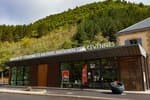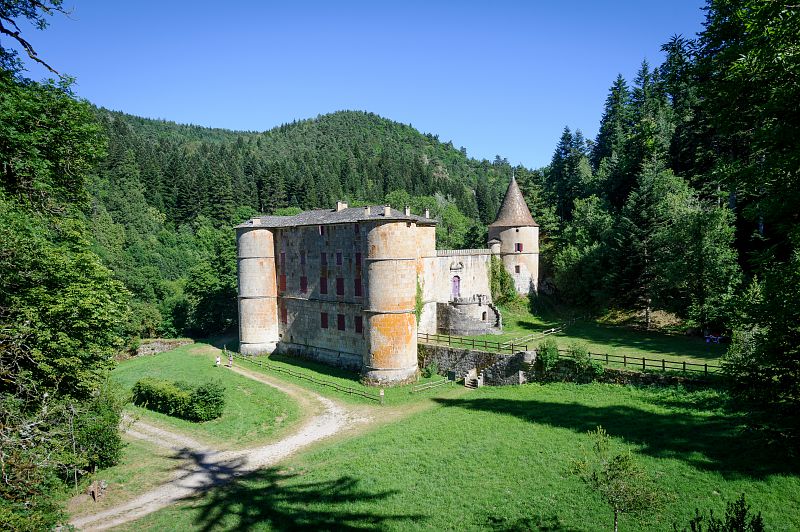
O Roquedols, my Roquedols!
This walk around the Roquedols Estate has a dreamlike quality: you will be charmed by the scents of the forest, the sound of the stream, and the château. But if you are attentive you will see that this enchanting environment was fashioned by men and women according to their wishes and needs.
8 points of interest
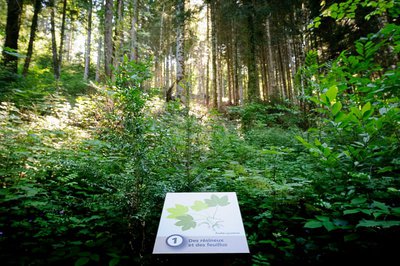
Forêt de Roquedols - © A. BOUISSOU / TERRA Ministère de l'Environnement  Natural environment
Natural environmentOf conifers and deciduous trees
Marker 1
In Roquedols forest, firs and beeches grow side by side magnificently. Softwood and hardwood, together? Yes, but the combination is not entirely due to chance. This forest is not a wilderness, but a space cultivated to maintain the diversity of species. At Roquedols, you can see conifers such as fir, larch and spruce as well as deciduous trees: beech, maple and ash. Gaps are made in the forest canopy to give the trees all the light that they need to develop.Attachment

© A. BOUISSOU / TERRA Ministère de l'Environnement  History
HistoryRoquedols or literary genius
Marker 2
“It is not a palace. It is a simple castel, a Cévenol castel: the château of a harsh and austere country. Backing onto wooded slopes, it stands in a hollow from where the view extends over the valley downstream.” (Jeannin, 1961). Standing at the top of the dovecote will easily give you a poetical outlook. Roquedols Estate and the forest on Mont Aigoual have inspired many authors. In the 19th century, Fabre d’Olivet invented a troubadour’s chant: in order to recover his castle and marry his betrothed, Ponce de Meyrueis must capture a sword held by terrible brigands. After many incidents, Ponce and Rose are reunited and can live together in love.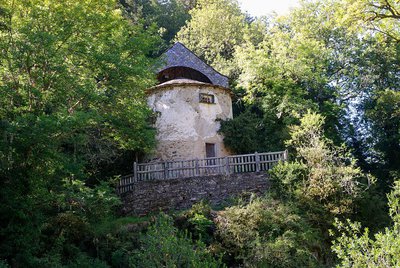
Le Pigeonier - © A. BOUISSOU / TERRA Ministère de l'Environnement  History
HistoryDovecote
Marker 2
The interior layout of the dovecote with its nesting-boxes has been lost. The set-back roof made it possible for the birds to sun themselves in the winter whilst remaining sheltered from the north wind. At Roquedols, as elsewhere, only the nobility had the right to breed pigeons, which were sought-after not only for their flesh but also for their droppings, used as a powerful fertiliser.
L'ancien béal - © A. BOUISSOU / TERRA Ministère de l'Environnement  History
HistoryBetween labour and idleness
Marker 3
Men and women have fashioned the Estate according to their needs and wishes. At Roquedols, crops used to be irrigated with water from the Pauchètes stream. In fact, the path you have just been walking on may have struck you as narrow and stony. It follows a former béal, or small irrigation channel. Much later, ornamental landscaping was laid out, including this beautiful archway – which is built on the vestiges of the wall of the former Protestant cemetery!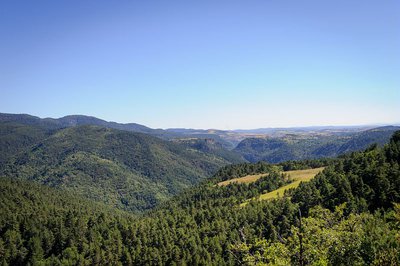
Forêt de l'Aigoual entre le col des Ubertes et Roquedols - eddie.balaye  Natural environment
Natural environmentProduce and protect
Marker 4
Felled trees and branches left on the ground in a protected space? That might seem surprising, but at Roquedols Estate, the forest has always been intended to be productive. In the 19th century, Messrs. Breuil, Dayre and Jouve already exploited the woods of Roquedols intensively. Today, tree fellings are planned with the greatest respect for biodiversity. You are in a living forest, whose appearance evolves by human intervention.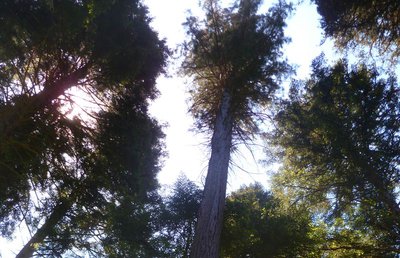
Séquoïa - © Elodie Mazel  History
HistoryForest giants
Marker 5
To contemplate these giants, you need to crane your neck and lift your eyes to the skies! The most remarkable is a giant sequoia originally from California. It was introduced at Roquedols for aesthetic reasons and out of a taste for the exotic. The many silver firs growing around it reveal ambitions of a different kind. In about 1840, the Estate’s owners created a tree nursery so as to be able to grow a large variety of species. The nursery was maintained until the 1980s.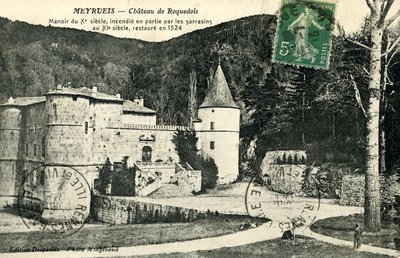
Coll. Ph. Chambon  History
HistoryThe Château de Roquedols
Marker 6
A former agricultural estate building, the traditional 14th century farm evolved into a castle in the 16th century. Looking at its quadrilateral shape, you will see that the tower on the left looks different from the one on the right. The shape of the porch before the entrance seems unlike the other parts of this monument. Up until the 20th century, the Château underwent several transformations, but Roquedols Estate has always retained its agricultural purpose. Its successive owners have taken possession of the space in different ways: the Dupont de Bossuges family hosted clandestine Protestant gatherings (18th c.); Madame Dol turned the Estate into a charming residence (late 19th to early 20th c.). During the Second World War, the castle was a refuge for the forestry services and a storage place for artworks. Today, it brings happiness to walkers looking for fresh air!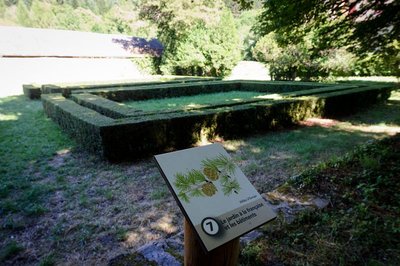
Jardins à la française - © A. BOUISSOU / TERRA Ministère de l'Environnement  History
HistoryThe formal garden and the buildings
Marker 7
Life was good at Roquedols in the late 19th century! Madame Dol transformed the Estate, embellishing the promenade with a chestnut avenue and formal garden. They might almost make you forget the Estate’s history of agriculture and forestry, except that its buildings – the former farm outbuildings later turned into a sawmill – are such visible reminders of it.
Description
The walk starts with a very gentle slope in the forest, to the pigeon-loft. It then follows a former béal (irrigation channel) to reach the château and gardens.
- Departure : Car park
- Arrival : Car park
- Towns crossed : Meyrueis
Forecast
Altimetric profile
Recommandations
Horse-riding or mountain-biking are not allowed on or adapted to discovery trails.
Information desks
Tourism & national parc'house
Col de la Serreyrède, 30570 Val d'Aigoual
The Maison de l'Aigoual houses the tourism office Mont Aigoual Causses Cévennes and the Maison du Parc national. This visitor centre provides information on and raises awareness of the Cévennes National Park, its sites and events as well as the rules that must be observed in the National Park's central zone.
On site: changing exhibitions, video projections, Festival Nature events and shop Open year-round
Tourism'house and national Parc at Florac
Place de l'ancienne gare, N106, 48400 Florac-trois-rivières
This office is part of the National Park's associated tourist-information network, whose mission is to provide information on, and raise awareness of, the sites and events as well as the rules that must be observed in the National Park's central zone.
On site: exhibitions, video projections, events and shop Open year-round
Access and parking
D 986 from Meyrueis towards Mont Aigoual, follow signs to Domaine de Roquedols (1.5 km from Meyrueis town centre).
D 986 from L'Espérou, Col de la Serreyrède, towards Meyrueis then Domaine de Roquedols.
Parking :
Calculateur d'itinéraire Lio
Utilisez le calculateur liO pour organiser votre trajet en région Occitanie.
Autres régions
Calculez votre itinéraire en Auvergne Rhône Alpes sur Oùra
Biodiversité autour de l'itinéraire
Source

Report a problem or an error
If you have found an error on this page or if you have noticed any problems during your hike, please report them to us here:


